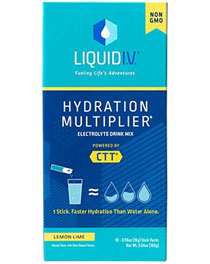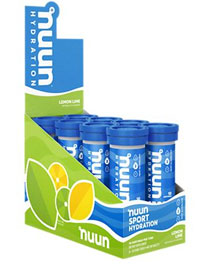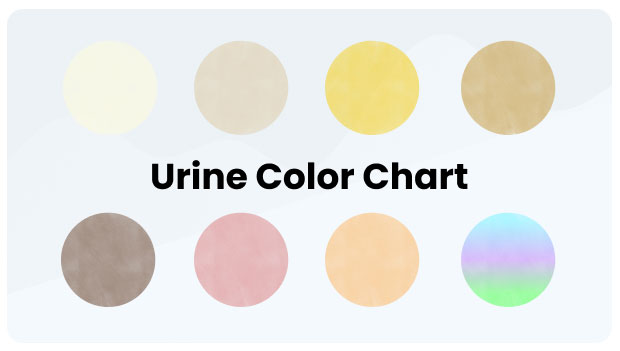
By clicking on the product links in this article, we may receive a commission fee at no cost to you, the reader. Sponsorships and affiliate commissions help support our research so we can help you find the best products. Read our full affiliate disclosure here.
If you’re privy to your pee color, you may understand that the toilet bowl can help indicate your hydration status. That said, urine color can change on a dime, reflecting a surprisingly large spectrum of pigments. Odd urine colors may send off a cascade of worry, but they could also be nothing serious. Contrarily, urine color can be the bladder’s way of communicating that something’s up with your health. Following a urine color chart can help clue you into what may be the color culprit.
In this article, we will explain the urine color hydration chart and offer insight and advice from experts, including dietitians and medical professionals, to help determine the different causes of discolored urine and ways to ensure the health of your bladder.
What Is Urine?
While a natural bodily function, not everyone knows the ins and outs of urination. Urine is a liquid waste that’s made up of water, salt, urea, and other substances.(1) First, your kidneys filter blood and decide which substances are beneficial (like nutrients) and should stay in your body and which substances, including toxins and acids, need to leave. Then the remaining fluids become urine and travel to the bladder for storage.(2) According to the National Library of Medicine, your bladder can hold two cups of urine for two to five hours before things become uncomfortable.(3) Most people pee about six to seven times a day, and medical conditions, medications, certain foods, and supplements can affect its color.(4)
Now that we've answered that question, here’s a breakdown of what different urine colors can mean in a urine color hydration chart.
Urine Color Chart
Checking your urine color for proper hydration and other issues can help keep your health in check. So, don’t be so quick to flush the toilet and take a look at the shades you see. Here’s our handy urine color chart for your reference.
Clear Urine

Color-free urine is an indicator that you’re drinking a lot of water. “While urine doesn't necessarily need to be clear, it should be a pale yellow color to indicate good hydration,” says urologist Dr. James Elist. While hydration is a good thing, drinking too much water is possible, which could disrupt your body’s electrolyte levels, causing health issues like hyponatremia.(5)
Cloudy Urine
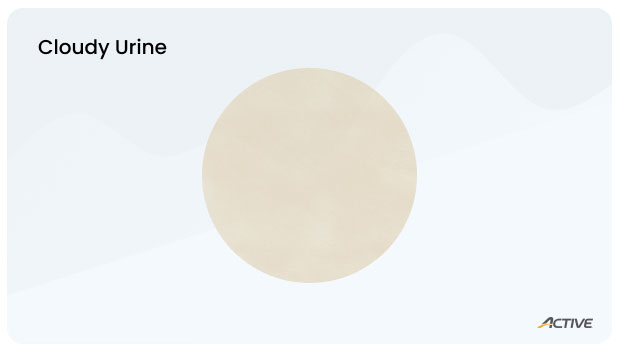
Cloudy urine may easily go unnoticed, but the good news is it can be harmless. Sometimes, it can be a sign of protein or calcium phosphate in the urine, which may not be an infection.(6) While cloudy urine can be free of disease, in some cases, it may point to a urinary tract infection (UTI) or kidney stones, especially if there’s pain while urinating.(6,7)
Yellow Urine

It’s fairly common for your pee color to be a variety of shades of yellow, primarily based on your hydration. “In general, urine should be a pale yellow color. If it's darker than that, it's a good idea to drink more fluids, especially water,” says Dr. Elist. What you consume can impact how yellow your pee appears as well. “When you consume a lot of B vitamins or multivitamin supplements, it can turn your urine into a brighter neon yellow,” says Nicole Ibarra, RD.(8)
Honey or Amber Urine
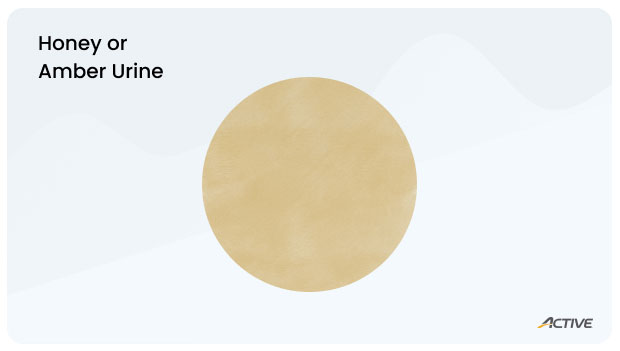
It’s no secret that darker urine color can reveal dehydration. Dehydration happens when there’s insufficient water for the body to function at its best, which can occur during sporting events or after a night of drinking alcohol.(9) If the toilet bowl is displaying a honey-like color, it may be time to load up on H2O to get your urine back to an optimal pale yellow color.
For athletes who lose water through profuse sweating, replenishing fluid and electrolytes is critical to restoring hydration. Some athletes and runners stay hydrated with the help of electrolyte drinks like Liquid I.V. Hydration Multiplier You can use water-drinking apps to help you stay on top of your hydration goals by tracking your daily water intake.
Need to rehydrate after a tough sweat session? Shop our recommended hydration products at The Vitamin Shoppe:
- Liquid I.V. Hydration Multiplier
- Nuun Sport Hydration
- Skratch Labs Hydration Sport Drink Mix
- Force Factor Liquid Labs Hydration
- Bucked Up Hydration
- Kaged Hydra-Charge
Brown or Black Urine
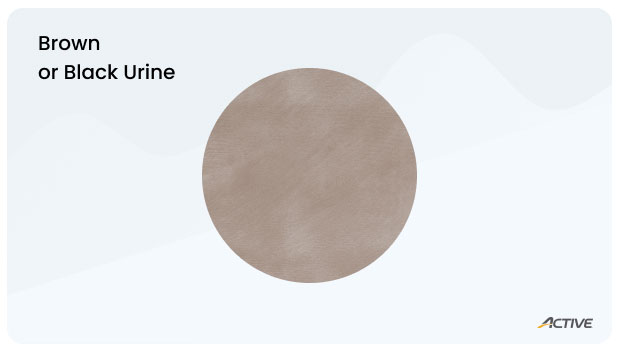
Urine that appears darker in color could indicate severe dehydration, especially with other signs like dry mouth and excessive thirst. Very dark urine could also show there’s something more serious going on. Brown urine could reflect liver concerns or even liver failure due to a build-up of bile, mentions Aleece Fosnight, PA, Sexual Health Counselor, and Medical Advisor at Aeroflow Urology.(10) Fosnight reports that extreme exercise, certain medications, laxatives that contain cascara, and iron supplements can also cause pee to turn brown. Further, food may be the culprit for tea-colored urine. “Fava beans in higher quantities can change our urine to be a darker brown color,” adds Ibarra. Medications and conditions darken your pee as well. Activated charcoal is used to stop overdosing or treat poisoning and can dim urine.(11) A very rare condition called Alkaptonuria (or black urine disease) can cause urine to turn black because of an oversupply of homogentisic acid in the body.(12)
Red or Pink Urine

Rosy hues in your urine outside of menstruation can be alarming but a telltale sign to see a physician. “Red or light pink may indicate that there is blood in the urine and warrants medical attention,” says Fosnight. The good news is reddish pee doesn’t always mean something is wrong. “While only affecting 10-14% of the population, some people notice a light pink to deep red hue to their urine after eating beet or beet-containing foods called beeturia,” says Dani Lebovitz, MS, RDN, nutrition education expert based in Franklin, TN, and founder of Kid Food Explorers.(13) This is due to betalains which are antioxidants in beets and blackberries and are responsible for red and pink discoloration in urine after eating these foods.(14)
Orange Urine
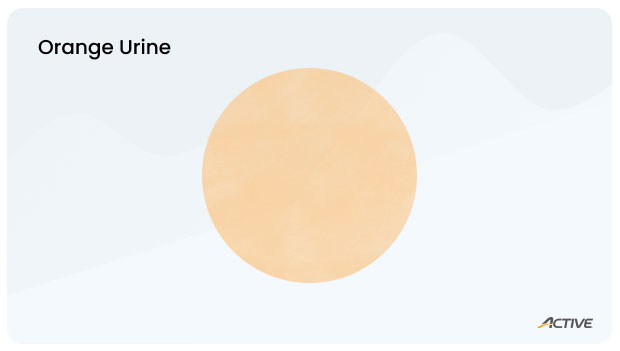
According to Fosnight, orange urine is abnormal and could reveal dehydration, kidney, liver, or bile duct health problems.(15) Medications such as chemotherapy drugs can also give pee a pumpkin-colored hue.(16) Orange pee is rare, but never hesitate to seek medical attention if you notice this color. "Remember, when you void into the toilet, this will dilute the true color of your urine. If you are really interested in knowing the exact color, void into a see-through cup," suggests Fosnight.
Blue, Purple, or Green
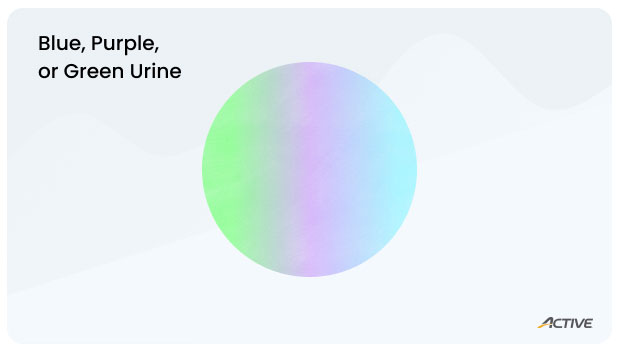
Blue or purple toilet water after going "number one" may be enough to send you into full panic.
It’s rare to see these pigments in pee, but it can happen from food dyes, medications, and health conditions.(17) Methylene blue is a blue dye and a drug and may be responsible for blue-tinted pee.(18) Other medications like certain antidepressants and ulcer reducers can also discolor urine.(18) Further, blue or purple pee can signal a pseudomonas UTI, blue diaper syndrome (a rare genetic condition), or purple urine bag syndrome, which is associated with UTIs.(18,19,20) Lastly, foods like asparagus could be blamed for green-tinged pee, food dyes, and pain medications.(18)
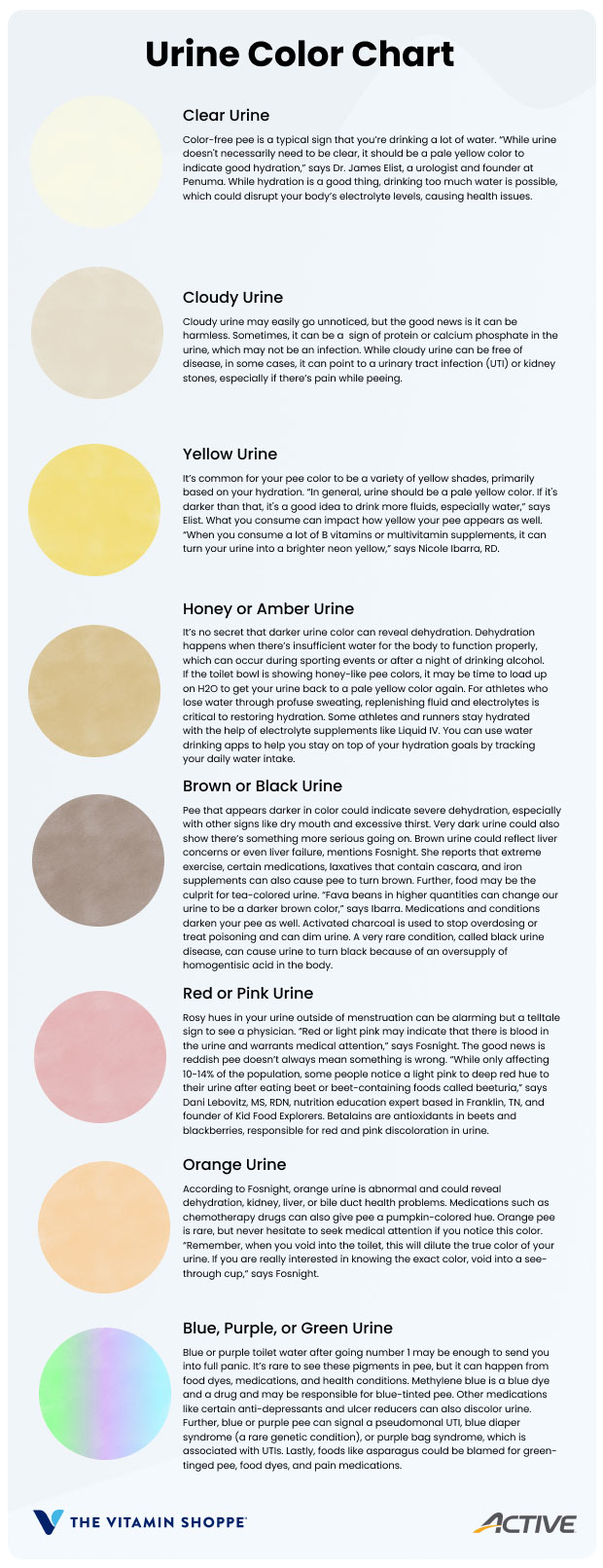
Is Urine Color A Good Indicator Of Hydration?
“Assessing urine color is a great indicator of hydration status because it can show us what our kidneys are doing. When we are dehydrated, our kidneys will concentrate our urine and hold onto any excess water, which contributes to color and foul smell,” says Nicole Ibarra. While experts tend to agree that urine helps tell us about how well-hydrated we are, it shouldn’t be the only marker.
“Often with my athletic clients, we will assess their body weight before and after exercise in addition to their urine color and thirst. When we combine these three measurements, it gives us a clear picture of what is going on. Active adults need more water and electrolytes than those who are not as active,” Ibarra adds.
Fosnight shared some additional hydration advice when stating, “[The] rule of thumb is to void every two to three hours. This will ensure that you are properly hydrated throughout the day. “
If your urine leaves you questioning how hydrated you are, it can also help to know the other signs of dehydration.
Signs of dehydration:(21)
- Dry, cracked lips
- Thirst
- Headaches
- Muscle cramps
- Low urine output
- Fatigue
What Color Should Urine Be?
As dehydration worsens, pee darkens. That’s because urochrome, a yellow-colored byproduct in your body, becomes more concentrated with less water.(22) Urine should be pale yellow, which is a good sign you’re well-hydrated. “Being hydrated ensures that the kidneys are working optimally, and the color helps to determine where you are in [your] hydration status. Hydration is important to regulate body temperature, lubricate joints, brain health, prevent infections, cellular function, and other important organ functions,” says Fosnight.
When To Seek Medical Help
“You should seek medical help regarding urine if you experience pain or burning sensation during urination, have blood in your urine, or have difficulty urinating. These could all be signs of a serious medical condition,” says Dr. Elist. Fosnight adds that orange or brown urine may indicate kidney disease and advises that you seek medical attention.
How to Keep Your Urine Health in Good Shape
Here are a few expert tips to help you maintain optimal urinary health:
- Drink fluids often: “Some of the best tips I have for hydration are to think beyond plain water intake. We can become hydrated by other beverages such as low-fat milk, flavored water, or even coffee! Yes, even coffee can contribute to your fluid intake to help hydration,” says Ibarra. “Adult males should aim for about 3.7 liters of fluid while adult women should consume about 2.7 liters, “she adds.
-
Eat healthy foods with high water content: According to the Academy of Nutrition and Dietetics, foods comprise 20 percent of your water intake.(23)
High-water foods to help stay hydrated include:(24)
Vegetables - cabbage, lettuce, squash, carrots, and celery
Fruit - watermelon, oranges, grapes, and cantaloupe
Dairy - ricotta cheese, cottage cheese, yogurt
- Stay in tune with your body: People often ignore the urge to pee because it may be inconvenient. Stay in tune with your body by honoring what it needs, and don’t prolong a bathroom trip because it could cause urinary problems later.(2) Paying attention to your urine trips, color, and smell altogether can be helpful to know if you have more significant issues.
FAQs
Why does my pee smell?
“Most of the time, urine smells because of the ammonia concentration and other waste products found in the urine. Other reasons include dehydration (increased ammonia concentration), urinary tract infection (bacteria creates an odor), foods (asparagus, Brussels sprouts, garlic, fish), beverages (coffee, alcohol), diabetes (glycosuria), genetic disorder (trimethylaminuria), STIs, over the counter vitamins or supplements,” says Fosnight.
Is urine supposed to be clear?
“Yes! Most of the time, [your] urine should be clear. However, sometimes there can be a few waste particles seen first thing in the morning and will clear throughout the day with increased water intake,” says Fosnight.
How many times should you pee a day?
The number of times you should urinate in a day can vary depending on your age, sex, prostate size, bladder, and overall health. In general, most people urinate between four to six times a day. However, if you are drinking a lot of fluids, you may urinate more frequently. If you are concerned about how frequently you are urinating, you should consult your doctor,” says Dr. Elist.
What does dark urine mean?
Usually, darker urine is a sign of dehydration, and your body needs more water as soon as possible. You can restore healthy hydration by drinking water right away, and if you’re hungry, snacking on high-water foods like watermelon, apples, and cucumbers.(24)
Final Takeaway
Abnormal urine colors are often a symptom of dehydration, something you’ve eaten, or a medication you’re taking. To stay hydrated, drink plenty of fluids, eat high-water foods, and listen to your body when it’s time to pee. If you see odd urine colors, including orange, blue, and red, or cloudiness, it’s time to see a doctor. Similarly, foul odor, pain, and burning during urination should also alert you to seek medical attention.
Why Trust Us?
The health and safety of ACTIVE’s readers is of the utmost importance to us. To ensure your well-being when consuming dietary supplements, the ACTIVE.com editorial team prioritizes products that are independently tested by a third party. We’ve consulted with a team of nutritionists and dieticians to ensure the products we feature are of the highest standard. This helps us create the most accurate, authentic review content for our readers.
Our Experts
- Alexandra Ginos, MBA, RD, CSP, nutritionist and fitness expert
- Roger Lockridge, 20 year fitness industry expert
- Ali Nolan, marathon runner
- David J. Sautter, NASM CPT, FNS, PES; ACE SES, personal trainer and fitness expert
- Bryee Shephard, MS, RD, nutrition expert
- Cory Kessler, CPT, FNC, health and wellness writer
- Daniel Preiato, RD, CSCS, sports nutrition expert
- Erin Chancer, CNC, expert health and wellness writer
- Katie Simpson, CPT, health and wellness writer
- Dr. Jacob Wilson, PhD, CSCS*D, training expert
- Lindsay Boyers, functional nutritionist
- Elspeth Huyett, cycling expert
- Gaby McPherson, nutrition expert
- Krisitne Golden, triathlete
- Lindsey Cooke, CNT, nutrition therapist
- Karla Tafra, nutritionist and yoga instructor
- Rachael Gonzalez, health and wellness writer
- Sosha Lewis, certified sleep coach, health and wellness writer, CrossFit veteran
- Frieda Johnson, expert health and wellness editor
These statements have not been evaluated by the Food and Drug Administration. This product is not intended to diagnose, treat, cure, or prevent any disease.
References
- Sarigul N, Korkmaz F, Kurultak İ. A New Artificial Urine Protocol to Better Imitate Human Urine. Sci Rep. 2019 Dec 27;9(1):20159. doi: 10.1038/s41598-019-56693-4. PMID: 31882896; PMCID: PMC6934465.
- National Institutes of Diabetes and Digestive and Kidney Diseases (2018). Your Kidneys & How They Work. NIH. Retrieved June, 2023, from https://www.niddk.nih.gov/health-information/kidney-disease/kidneys-how-they-work
- InformedHealth.org [Internet]. Cologne, Germany: Institute for Quality and Efficiency in Health Care (IQWiG); 2006-. How does the urinary system work? 2009 Nov 25 [Updated 2018 Apr 5]. Available from: https://www.ncbi.nlm.nih.gov/books/NBK279384/
- Bladder & Bowel Community.(2023) Urinary Frequency – How Often Should You Pee? Retrieved June, 2023, from https://www.bladderandbowel.org/bladder/bladder-conditions-and-symptoms/frequency/
- Rondon H, Badireddy M. Hyponatremia. [Updated 2023 Jan 23]. In: StatPearls [Internet]. Treasure Island (FL): StatPearls Publishing; 2023 Jan-. Available from: https://www.ncbi.nlm.nih.gov/books/NBK470386/
- Bono MJ, Leslie SW, Reygaert WC. Urinary Tract Infection. [Updated 2022 Nov 28]. In: StatPearls [Internet]. Treasure Island (FL): StatPearls Publishing; 2023 Jan-. Available from: https://www.ncbi.nlm.nih.gov/books/NBK470195/
- National Institutes of Diabetes and Digestive and Kidney Diseases (2017). Symptoms & Causes of Kidney Stones. NIH. Retrieved June, 2023, from https://www.niddk.nih.gov/health-information/urologic-diseases/kidney-stones/symptoms-causes
- Kenefick RW, Heavens KR, Dennis WE, Caruso EM, Guerriere KI, Charkoudian N, Cheuvront SN. Quantification of chromatographic effects of vitamin B supplementation in urine and implications for hydration assessment. J Appl Physiol (1985). 2015 Jul 15;119(2):110-5. doi: 10.1152/japplphysiol.00068.2015. Epub 2015 May 14. PMID: 25977447.
- Mayo Clinic (2021, October 14). Dehydration. Diseases and Conditions. Retrieved June 28, 2023, from https://www.mayoclinic.org/diseases-conditions/dehydration/symptoms-causes/
- Johns Hopkins Medicine (2023). Common Characteristics of Liver Disease. Health. Retrieved June 28, 2023, from https://www.hopkinsmedicine.org/health/conditions-and-diseases/common-characteristics-of-liver-disease
- Juurlink DN. Activated charcoal for acute overdose: a reappraisal. Br J Clin Pharmacol. 2016 Mar;81(3):482-7. doi: 10.1111/bcp.12793. Epub 2015 Nov 9. PMID: 26409027; PMCID: PMC4767212.
- Sharabi AF, Goudar RB. Alkaptonuria. [Updated 2022 Aug 8]. In: StatPearls [Internet]. Treasure Island (FL): StatPearls Publishing; 2023 Jan-. Available from: https://www.ncbi.nlm.nih.gov/books/NBK560571/
- Sauder HM, Rawla P. Beeturia. [Updated 2023 May 22]. In: StatPearls [Internet]. Treasure Island (FL): StatPearls Publishing; 2023 Jan-. Available from: https://www.ncbi.nlm.nih.gov/books/NBK537012/
- Sadowska-Bartosz I, Bartosz G. Biological Properties and Applications of Betalains. Molecules. 2021 Apr 26;26(9):2520. doi: 10.3390/molecules26092520. PMID: 33925891; PMCID: PMC8123435.
- Cleveland Clinic (2020, January 6). Changes in Urine. Diseases and Conditions. Retrieved June 28, 2023, from https://my.clevelandclinic.org/health/diseases/15357-urine-changes
- National Cancer Institute (2020). Urinary and Bladder Problems. NIH. Retrieved June, 2023, from https://www.cancer.gov/about-cancer/treatment/side-effects/urination-changes
- Meng QH, Handy B, Wagar EA. It's not easy being blue-green. Ann Lab Med. 2013 Nov;33(6):457-8. doi: 10.3343/alm.2013.33.6.457. Epub 2013 Oct 17. PMID: 24205497; PMCID: PMC3819447.
- Queremel Milani DA, Jialal I. Urinalysis. [Updated 2023 May 1]. In: StatPearls [Internet]. Treasure Island (FL): StatPearls Publishing; 2023 Jan-. Available from: https://www.ncbi.nlm.nih.gov/books/NBK557685/
- National Center for Advancing Translational Sciences (2023).Blue Diaper Syndrome. NIH Genetic and Rare Diseases Information Center. Retrieved June, 2023, from https://rarediseases.info.nih.gov/diseases/5939/blue-diaper-syndrome
- Al Montasir A, Al Mustaque A. Purple urine bag syndrome. J Family Med Prim Care. 2013 Jan;2(1):104-5. doi: 10.4103/2249-4863.109970. PMID: 24479059; PMCID: PMC3894016.
- Taylor K, Jones EB. Adult Dehydration. [Updated 2022 Oct 3]. In: StatPearls [Internet]. Treasure Island (FL): StatPearls Publishing; 2023 Jan-. Available from: https://www.ncbi.nlm.nih.gov/books/NBK555956/
- Belasco R, Edwards T, Munoz AJ, Rayo V, Buono MJ. The Effect of Hydration on Urine Color Objectively Evaluated in CIE L*a*b* Color Space. Front Nutr. 2020 Oct 26;7:576974. doi: 10.3389/fnut.2020.576974. PMID: 33195369; PMCID: PMC7649145.
- Gordon, B. and Klemm, S. (2022, June 23). How Much Water Do You Need?. Academy of Nutrition and Dietetics. Retrieved June 28, 2023, from https://www.eatright.org/health/essential-nutrients/water/how-much-water-do-you-need
- Popkin BM, D'Anci KE, Rosenberg IH. Water, hydration, and health. Nutr Rev. 2010 Aug;68(8):439-58. doi: 10.1111/j.1753-4887.2010.00304.x. PMID: 20646222; PMCID: PMC2908954.




